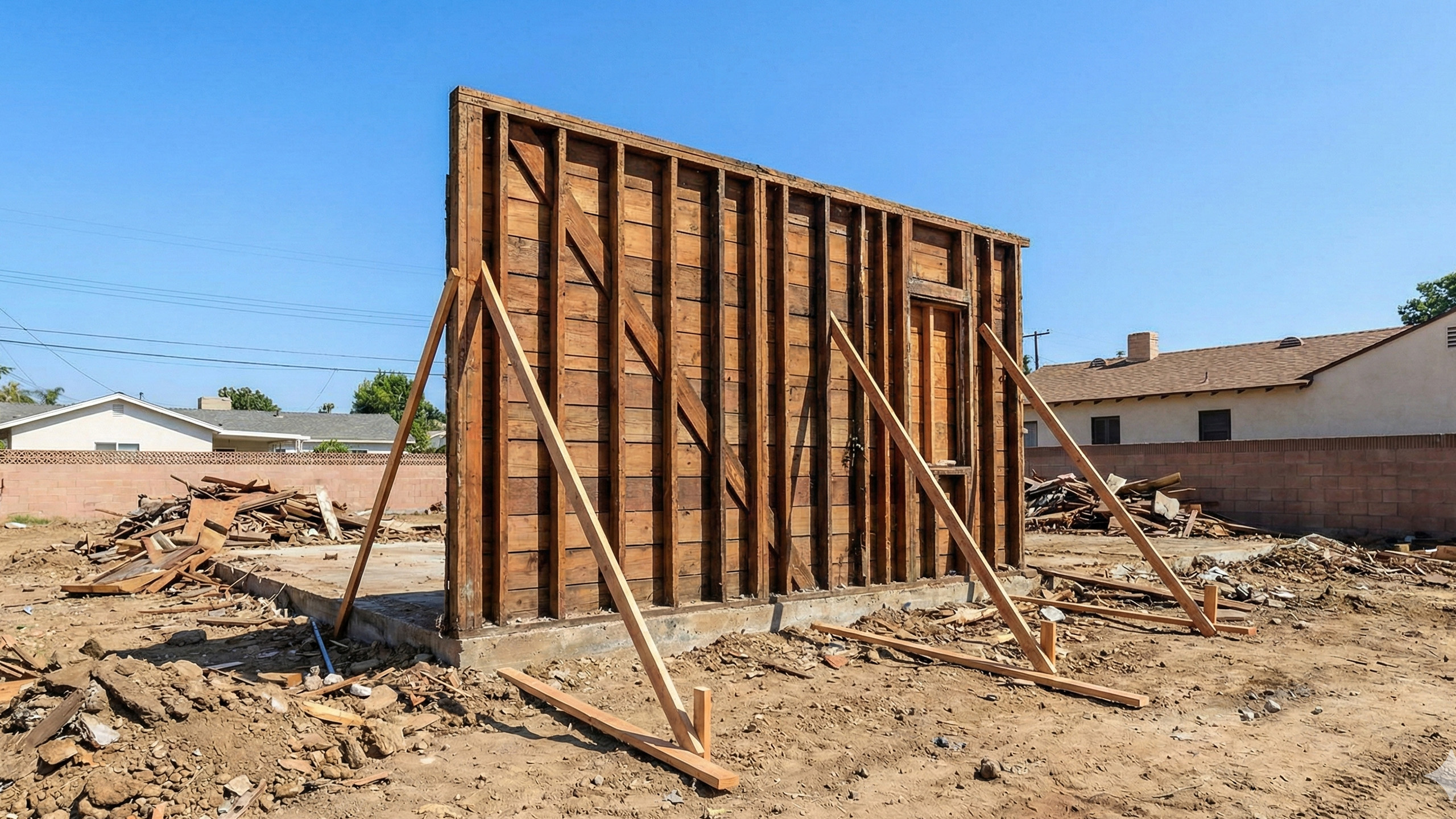In the world of residential design and construction, where every penny counts, keeping your budget in check can feel like a losing game. Soaring costs and unexpected expenses trigger frustration and anxiety, leaving homeowners and builders at odds and searching for solutions. To help you better understand why costs aren't what they used to be, we'll delve into the reasons behind the escalating expense of residential construction. Plus, we'll reveal our strategic approaches and practical tips to conquering these challenges, ensuring that your budget stays intact while your dream home comes to life. So, if you're eager to gain a deeper understanding of the complex dynamics at play and learn ways to preserve your financial resources, this blog is for you!
Residential Construction Cost Types:
First and foremost, it is important to understand that residential build costs fall into two primary categories: soft and hard costs. Only taking the build itself into consideration often leaves homeowners with an unrealistic assumption of what their all-in budget truly needs to accommodate.
Soft costs are any expenses that are indirectly related to construction, such as design fees, permits, and consulting services. These costs are often variable and can fluctuate based on the project's complexity and location. For example, a hillside lot with steep terrain and a lack of access and services will incur increased soft costs when building a new home as compared to a flat infill lot.
Hard costs, on the other hand, are the direct expenses associated with the physical construction of a home, covering materials, labor, and equipment. Material costs are influenced by global market trends and resource availability, while labor costs are subject to change based on market demand and the availability of skilled workers.

Factors at Play in Construction Costs:
There are many reasons building your dream home has gotten more expensive in recent years. Some are simply outside of your control, but others can be managed with informed choices on your part. But before you can learn how to master the game, you'll need to know the players:
1. Material Cost Fluctuations
Unfortunately, the cost of construction materials is subject to global market trends. International trade policies and supply chain challenges can lead to increased costs for essential materials such as lumber, steel, concrete, as well as finishes and fixtures like tile, plumbing fixtures, countertops, flooring, etc. These final touches can add hundreds of thousands of dollars onto a build, based solely on their quality level and sourcing availability.
2. Labor Market Trends
Construction labor shortages in major metropolitan cities across the country are causing significant challenges in the industry. With a shortfall of approximately 15% to 20% in the construction labor force in Los Angeles, specialized trades like electrical, plumbing, and carpentry are particularly affected.
The implications of this shortage are wide-ranging:
- Rising Labor Costs: The demand for skilled workers exceeds the available supply, leading to increased wages and higher project labor costs.
- Project Delays: Shortages in skilled labor result in a lack of workers, causing delays in project timelines. These delays have a ripple effect on the overall construction schedule in the city.
- Quality Concerns: With fewer qualified workers, there is a higher risk of errors and subpar work, leading to additional costs and delays in rectifying issues.
- Impact on Overall Construction Costs: The scarcity of skilled labor indirectly impacts the overall cost of construction projects, resulting in cost overruns and affecting financial planning.
Construction firms are implementing various strategies to address this challenge. These include investing in workforce training programs, increasing wages, and leveraging technology to improve efficiency. However, finding long-term solutions to the labor shortage remains crucial for sustainable growth and development in the construction industry in Los Angeles.
3. Scope Creep
Managing scope creep is essential. Scope creep occurs when project parameters expand without corresponding adjustments in time, budget, or resources, often leading to budget overruns.
For example, if you're starting a project for a high-end residential property in Los Angeles, the initial plan includes an interior remodel that maintains the existing lighting, flooring, and HVAC system. Once the drawings and design have been developed, you decide that you’d like to add lighting upgrades, a high-tech audio-visual system, HVAC upgrades, and new premium-grade flooring. These additions, while valuable, significantly impact the project's cost and timeline.
Avoiding scope creep can be a challenge, especially when it's triggered by unexpected situations and the client's needs. By implementing a formal change order process, we ensure that any scope modifications are properly documented, evaluated for cost and time implications, and approved before implementation.
4. Unforeseen Conditions
When it comes to residential construction projects, there are several issues that can arise unexpectedly. One of these issues is termite infestation, which can be a serious problem if not addressed promptly. Additionally, water damage that goes unnoticed can cause significant damage to the structure of the building. Another common issue is mold, which can be difficult to detect and remove.
To tackle these challenges, the correct approach involves conducting thorough initial assessments to identify any existing issues. It's important to devise flexible plans that can adapt to unexpected hurdles that may arise during the construction process. Furthermore, conducting proactive economic analyses to ensure that our solutions are cost-effective and efficient. By anticipating and efficiently tackling these challenges, it's possible to minimize their impact on the overall project.
5. Last Minute Design Changes
Implementing design changes during the advanced phases of a residential construction project can significantly impact the budget and timeline. Tackling this challenge by advocating for the early finalization of designs and maintaining open lines of communication with you to ensure any modifications align with your vision while being realistic in terms of cost and feasibility.

Strategies for Controlling Construction Cost Inflation:
To manage the increase in construction costs for residential projects that are within your control, you can utilize the following methods:
1. Targeted Collaboration
By collaborating with a turnkey service like Letter Four, which includes specialists with specific expertise in the residential sector such as architects, interior designers, and craftsmen skilled in residential construction, you can effectively anticipate and manage costs with our deep understanding of home building.
2. Customized Material Procurement Strategies
Tailoring the procurement processes to suit the specific requirements of home construction by working closely with suppliers who specialize in residential materials and furnishings. By doing this, the project gets the best quality at the most cost-effective prices.
3. Early Integration of Custom Home Features
By engaging with clients and designers early in the project to finalize custom home features, high costs associated with late-stage changes and modifications can be avoided.
4. Enhanced Communication for Homeowner Involvement
Keeping communication channels open and transparent, so you're always part of the decision-making process. This helps manage expectations and make cost-effective choices that match the client's vision and budget.
5. Market Trend Analysis for Residential Materials
Continuously monitor market trends specific to residential construction materials to forecast cost changes and plan procurement accordingly. This helps secure materials at the best prices and hedge against future price increases.
6. Strategic Material Storage for Home Projects
Given the longer timelines and more intricate nature of residential projects, strategically utilizing warehouse storage to secure key materials, particularly those that are custom-made or have longer lead times. This mitigates risks associated with material price fluctuations and supply chain disruptions.

SO DON'T LET RISING CONSTRUCTION COSTS GET IN YOUR WAY!
Through a dedicated focus on specialized collaboration, customized procurement processes, early integration of home features, and seamless communication ensures that each home built not only reflects your unique dreams and aspirations but also serves as a remarkable testament to our commitment to cost-effective and highly efficient construction practices. This approach enables the creation of homes that are not only aesthetically pleasing but also functional and sustainable. By incorporating innovative design elements, energy-efficient systems, and quality materials, residential projects are transformed into comfortable and environmentally conscious living spaces.
Additionally, careful attention is given to project timelines and budgets to ensure cost-effective choices that match our client's vision and budget. With a keen focus on analyzing market trends for residential materials and strategically managing material storage, residential construction projects are executed with exceptional efficiency and success.
By skillfully implementing these proven strategies, Letter Four is able to effectively manage and control cost inflation in residential construction projects. Our team is dedicated to ensuring that every aspect of your home-building process is optimized for efficiency and cost-effectiveness.
Don't miss out on the opportunity to create your dream home with us. Contact us today and let's get started on turning your vision into reality.






.svg)























.png)